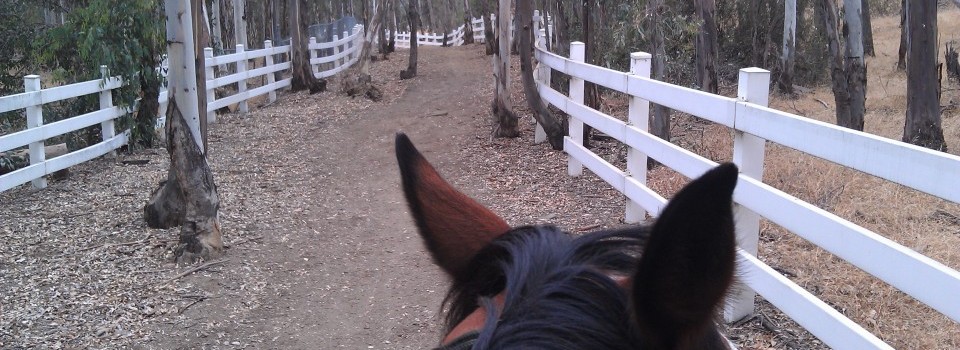
In Oklahoma, where I grew up, one of the first plants to show green in the spring was Lamium amplexicaule, which we called henbit. This little plant is in the mint family, although it doesn’t smell “minty” (or even “sagey” or “oreganoesque” like other members of the family).
Henbit and other members of the genus Lamium are also called dead-nettles. This had always puzzled me, because when they came up in the spring, they were one of the few plants “alive”, green and growing.

One day I rode Veronica down to the grass and weeds on the slope below the arena, where she likes to graze (until it all turns brown in the late spring). Both she and Buddy had encountered Urtica urens, the annual stinging nettle. Both were stung on the lips, and both decided they weren’t interested in that plant any more.
Veronica reached down for a patch of what appeared to be stinging nettle. I told her, “I don’t think you’re going to like that,” but as she ate it, I realized it was dead-nettle, and the light bulb went on. It (and other members of the genus Lamium) superficially resembles stinging nettle, but it doesn’t sting—it’s “dead”.

Now if I had looked it up in Wikipedia, I would have learned that, but instead I learned it because a horse has a very different view of plants than a person, even if that person is a botanist.
I’m a botanist. You probably guessed that from the title and the scientific names. I’ve been fortunate in being paid to teach botany to college students for around four decades. But I’ve never stopped learning, and in this as in so many other areas, horses have been my teachers.
Buddy prefers mouse barley (Hordeum murinum) over slender wild oat (Avena barbata). Mouse barley is the commonest source in my region of the foxtails that get caught in dogs’ fur, ears, and nostrils. Buddy eats it before it’s ripe and breaking apart, when the grains are sweet and soft.

He loves Italian thistle (Carduus pycnocephalus), which is related to artichoke, and sow thistle (Sonchus oleraceus) and prickly lettuce (Lactuca serriola), both lettuce relatives. If we ignore the “beards” of the barley, the spines of the thistle, and the bitter milky sap of the last two, these are plants we would eat. The flavor palettes of a horse’s palate are different from ours, but not totally alien.

Most botanists today don’t spend a lot of time with horses. But it wasn’t always so. The early botanical exploration of western North America by botanists of European ancestry was most often carried out on horseback, with pack mules. I wonder what they learned from their horses and mules. Was the knowledge that I’m now discovering once commonplace, in a world where equines were commonplace? Or were the old-time botanists as likely to look to their horses for guidance as I am to look to my truck? Many of their journals still exist, and so perhaps we could learn, if we looked, and if they bothered to write about it.

My days of botanical exploration are largely in the past. And there are real advantages to 4WD vehicles. But the view from a horse, and with the horse’s world in mind, should be part of the experience of every botanist.
